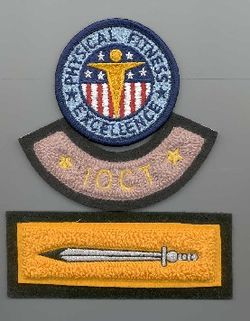
The United States Military Academy (USMA) is a United States service academy in West Point, New York. It was originally established as a fort during the American Revolutionary War, as it sits on strategic high ground overlooking the Hudson River 50 miles (80 km) north of New York City. It is the oldest of the five American service academies and educates cadets for commissioning into the United States Army.

The United States Air Force Academy (USAFA) is a United States service academy in El Paso County, Colorado, immediately north of Colorado Springs. It educates cadets for service in the officer corps of the United States Air Force and United States Space Force. It is the youngest of the five service academies, having graduated its first class 65 years ago in 1959, but is the third in seniority. Graduates of the academy's four-year program receive a Bachelor of Science degree and are commissioned as second lieutenants in the U.S. Air Force or U.S. Space Force. The academy is also one of the largest tourist attractions in Colorado, attracting approximately a million visitors each year.
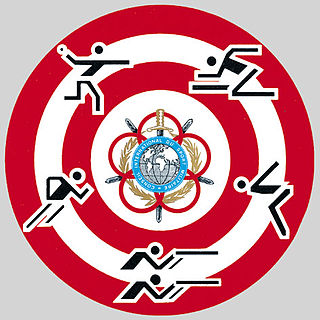
The Military Pentathlon is a multisport. It resembles the modern pentathlon but updated to skills used by the modern military.
An assault course is a trail that combines running and exercising. It was more popular in the 1970s than it is now. It is often used in military training. The prime use is to evaluate progress and weaknesses of the individual or the team involved. The term Assault Course can be replaced by Obstacle Course, which some view as more accurate. Confidence Courses is another term used. There are also specific Urban Obstacle Courses and Night Obstacles Courses. An Obstacle Course Race (OCR) is a civilian sporting and fitness challenge event which combines obstacles and cross country running.

A ropes course is a challenging outdoor personal development and team building activity which usually consists of high elements, low elements, or some combination of the two. Low elements take place on the ground or above the ground. High elements are usually constructed in trees or made of utility poles and require a belay for safety.

The United States Marine Corps Officer Candidates School (OCS) is a training regiment designed to screen and evaluate potential Marine Corps Officers. Those who successfully complete the period of instruction are commissioned as Second Lieutenants in the United States Marines. Unlike the other United States military services, the majority of Marine Corps officers complete OCS to earn a commission; the exceptions are midshipmen from the United States Naval Academy, limited duty officers and warrant officers, and inter-service transfers. It is located at Marine Corps Base Quantico.
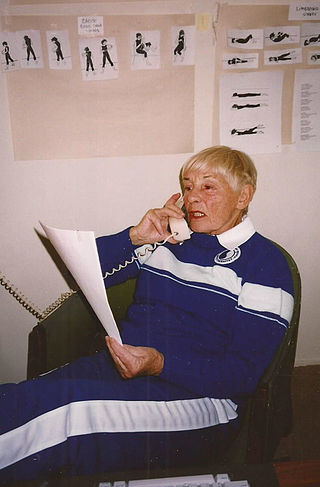
Bonnie Prudden was an American physical fitness pioneer, rock climber and mountaineer. Her report to Eisenhower on the unfitness of American children as compared with their European counterparts led to the formation of the President's Council on Youth Fitness.
An obstacle course is a series of challenging physical obstacles an individual, team or animal must navigate, usually while being timed. Obstacle courses can include running, climbing, jumping, crawling, swimming, and balancing elements with the aim of testing speed, endurance and agility. Sometimes a course involves mental tests. The idea has been adapted into TV shows and video games.

The Sandhurst Military Skills Competition is a military skills competition at West Point that first began in 1967 with the presentation of a British officer's sword to the United States Corps of Cadets by the British Exchange Officer. 2010's event, dubbed SANCOM10, was a two-day event conducted at West Point, New York. The 2009 competition featured a record 49 teams and nearly 500 competitors. Besides the 36 squads from each of the West Point companies, visiting service academy teams included the Naval, Air Force and Coast Guard Academies, Britain's Royal Military Academy Sandhurst (RMAS) teams "Red" and "Blue", Australia's Royal Military College Duntroon, Canada's Royal Military College (RMC), the National Military Academy of Afghanistan, and the Chilean Military School. That year saw eight ROTC squads: Texas A&M, BYU, East Carolina University, Iowa State University, Florida Tech, Georgetown, University of Hawaii, and Appalachian State.
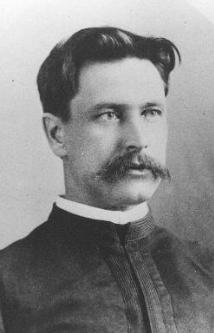
Herman John Koehler was an American football coach, athletics administrator, and United States Army officer. He served as the head football coach at the United States Military Academy from 1897 to 1900, compiling a record of 19–11–3.

The University of Oklahoma Army ROTC is the primary officer training and commissioning program at the University of Oklahoma and one of the oldest in the nation, having existed in some form since the First World War. It is known as the "Sooner Battalion" and is notable for having produced thousands of officers for the United States Army, including 19 general officers. It is led by three officers and two noncommissioned officers.
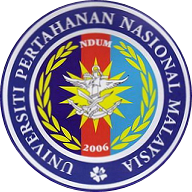
The National Defence University of Malaysia is a military university located in Sungai Besi Camp, Kuala Lumpur, Malaysia.

The Department of Physical Education is the academic department that oversees the physical development program at the United States Military Academy at West Point, New York. DPE is headquartered in the Arvin Cadet Physical Development Center. DPE has 24 Military faculty and 25 civilian instructors and professors. The head of the department holds the ceremonial title of Master of the Sword, known within the department as the MOS. This title dates back to when the Cadets at West Point were taught swordsmanship as part of their military and physical training. The current Master of the Sword is COL Nicholas Gist, who has held the position since 2015. The department's stated mission is:
The Department of Physical Education develops warrior leaders of character who are physically and mentally tough by engaging cadets in activities that promote and enhance a healthy lifestyle, physical fitness, movement behavior, and psychomotor performance.
The history of the United States Military Academy can be traced to fortifications constructed on the West Point of the Hudson River during the American Revolutionary War in 1778. Following the war, President Thomas Jefferson signed legislation establishing the United States Military Academy (USMA) on the site in 1802. In 1817 the academy was transformed by the appointment of Sylvanus Thayer who drastically reformed the curriculum.
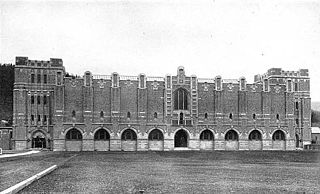
Hayes Gymnasium, completed in 1910, is the oldest section of the current Arvin Cadet Physical Development Center at the United States Military Academy. Originally built as an independent structure to replace the academy's previous Richard Morris Hunt-built gymnasium which had served between 1891 and 1910, it was part of a large contract bid awarded to the Boston architectural firm of Cram, Goodhue, & Ferguson in 1903.

Spartan Race is a series of obstacle races of varying difficulty, ranging from 3 miles to ultra-marathon distances of 50k+.
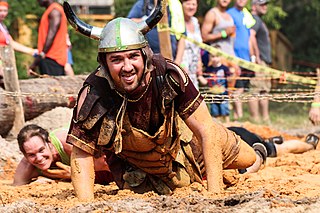
Obstacle course racing (OCR) is a sport in which a competitor, traveling on foot, must overcome various physical challenges in the form of obstacles. Races vary in length from courses with obstacles close together to events of several kilometers which incorporate elements of track, road and/or cross country/trail running. Courses may include climbing over walls or up ropes, monkey bars, carrying heavy objects, traversing bodies of water or mud, crawling under barbed wire, and jumping through fire. Since the beginning of modern OCR in 1987, the sport has grown in popularity such that more than 2500 events are held annually across the world and several run organizing companies are commercially successful.

The Army Reserve Officer Training Corps (AROTC) is the United States Army component of the Reserve Officers' Training Corps. It is the largest Reserve Officer Training Corps (ROTC) program which is a group of college and university-based officer training programs for training commissioned officers for the United States Army and its reserves components: the Army Reserves and the Army National Guard. There are over 30,000 Army ROTC cadets enrolled in 274 ROTC programs at major universities throughout the United States. These schools are categorized as Military Colleges (MC), Military Junior Colleges (MJC) and Civilian Colleges (CC).
The Superstars was a televised sporting event featuring ten top athletes from ten different sports competing in events that were not their own. The idea was developed by Dick Button who shopped the idea to all three U.S. television networks. The show was sold to ABC which aired it as a two-hour ABC Sports special in the winter of 1973.
Pretty Huge is a multi-sports and performance training facility at the SM Aura Premier, Bonifacio Global City in Taguig, Metro Manila, Philippines. Originally established as a multi-level obstacle course racing, the facility was expanded to include a FIBA-grade indoor basketball court that may be used for other indoor sports and an elevated 100m race track.
